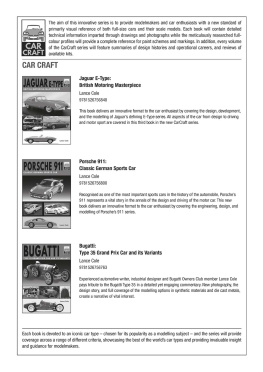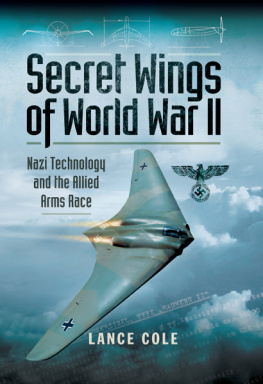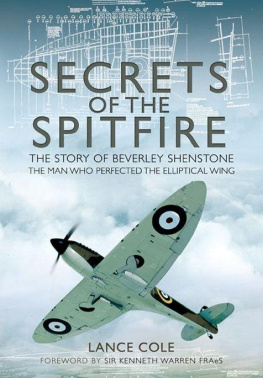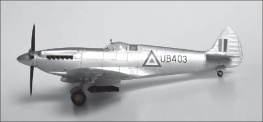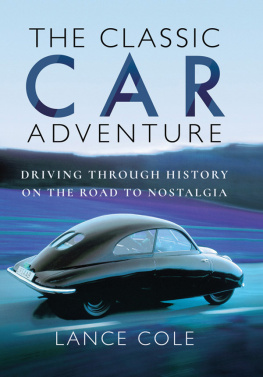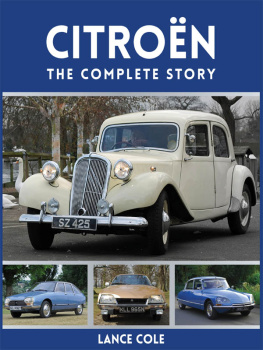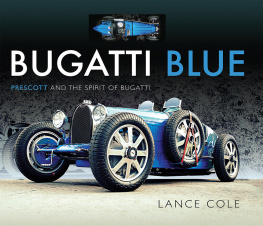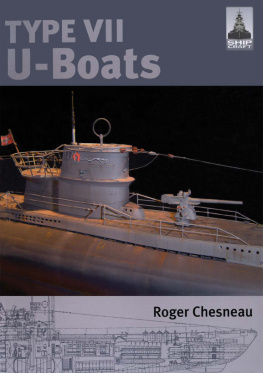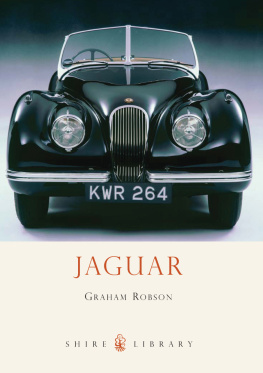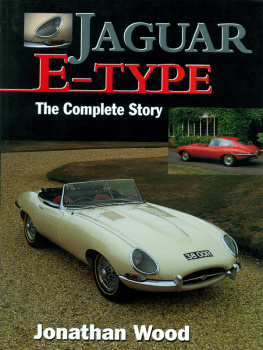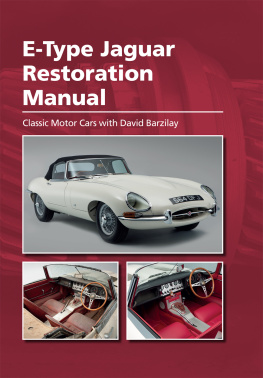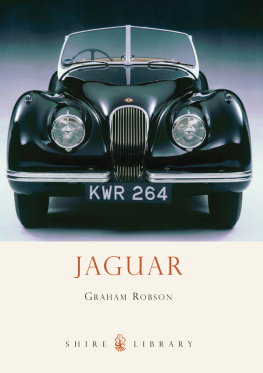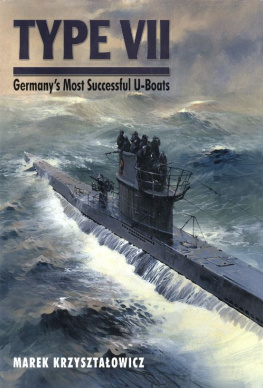Pagebreaks of the print version

The stunning shape of the rare, Malcolm Sayer-designed Low Drag E-Type seen from above with the aero design features obvious.
CarCraft 3
JAGUAR E-TYPE
BRITISH MOTORING MASTERPIECE
Lance Cole
Front cover. Top: Front three-quarter view of the Amalgam Collection E-Type Roadster 1/8 scale. Centre photos clockwise from top left: E-Type V12 S3 Coupe with longer wheelbase defined a different E-Type for the 1970s; The essential S1 soft-top E-Type in all its ellipsoid elegance; The S1 fastback Coupe and S2 Roadster show off their different designs. Profile: E-Type Roadster in red (David Bocquelet).
First published in Great Britain in 2020 by PEN & SWORD TRANSPORT an imprint of Pen & Sword Books Ltd
47 Church Street, Barnsley, South Yorkshire S70 2AS
Copyright Pen & Sword Books, 2020
Profile illustrations David Bocquelet
ISBN 9781526756848
eISBN 9781526756855
mobi ISBN 9781526756862
The right of Lance Cole to be identified as the author of this work has been asserted in accordance with the Copyright, Designs and Patents Act 1988.
A CIP record for this book is available from the British Library. All rights reserved.
No part of this book may be reproduced or transmitted in any form or by any means, electronic or mechanical including photocopying, recording or by any information storage and retrieval system, without permission from the Publisher in writing.
Every reasonable effort has been made to trace copyright holders of material reproduced in this book, but if any have been inadvertently overlooked the publishers will be pleased to hear from them.
Pen & Sword Books Ltd incorporates the imprints of Pen & Sword Archaeology, Atlas, Aviation, Battleground, Discovery, Family History, History, Maritime, Military, Naval, Politics, Railways, Select, Social History, Transport, True Crime, Claymore Press, Frontline Books, Leo Cooper, Praetorian Press, Remember When, Seaforth Publishing and Wharncliffe.
For a complete list of Pen & Sword titles please contact
Pen & Sword Books Limited, 47 Church Street, Barnsley, South Yorkshire, S70 2AS, England
Email:

Classic scene: blue magic. The essential design language of the feline E-Type SI in soft-top roadster form with hood down on a summers day. That bonnet and the proportions of the car say everything about Malcolm Sayers exquisite design.
INTRODUCTION
The E-Type: British Motoring Masterpiece
There are many cars of the twentieth century that have claims to fame, of being icons of car design and driving, yet the number of true icons can almost be counted on one hand. Arguably the Jaguar E-Type leads the pack but there are other contenders: Porsche 911, Aston Martin DB4, Ferrari Daytona, Lamborghini Muira, Citron DS, Willys Jeep, BMW 328 and Ford Mustang to name a few candidates.
There are other cars that their champions will cite as more worthy, not least from their national perspective: the Porsche 911 is of course a worldwide icon, but for many, the truth is that the Jaguar E-Type (or the XKE as it was tagged by Americans) was the global legend of its age. It was also a huge British design achievement on an international stage when British industrial design produced everything from cars such as the Mini and the Rover P6, to the QE2 liner, the Avro Vulcan, the Blackburn Buccaneer, the TSR2, the Vickers VC10 and then Concorde itself.
We must observe though that the Porsche 911 line continues to this day whereas E-Type does not. But that is not its fault, for that responsibility lies with what became British Leyland (BL) out of the British Motor Corporation (BMC) and merger with the Leyland Company in 1968; BLMC or just BL swallowed up Jaguar and several major British brands in league with British governments of all political hues whose hands ultimately lay upon the end of indigenous British volume car manufacturing. Latterly, Sir John Egan reinvented Jaguar from its darkest BL days of declining quality and poor productivity in antiquated factories.
The E-Type was to become part of the BL process upon Jaguar, but has yet to be reincarnated despite several proposals and of course the F-Type as todays inheritor of the ethos.
We should not forget that, contrary to perceived wisdom, BLs famous Sir Michael Edwardes was not brought into BL by British Prime Minister Margaret Thatcher; he was in fact appointed in 1977 by a Labour leader named James Callaghan. It would be the 1980s before Jaguar threw off its yoke of State thinking under BL. But Edwardes would free Jaguar to regain its brand identity. Yet all that was long after the heyday of Jaguars 1950s Le Mans fame, the C-Type, D-Type and then the E-Type itself that was born as the 1960s began.
Revealed to a stunned world via a launch at the Salon d lAuto de Genve in March 1961, the Jaguar E-Type (in fact to be badged as the E-Type Jaguar) actually caused the traffic to stop in several stylish cities when the inhabitants got their first sight of its incredible, yet never outrageous, style. This was no styling gimmick of a car, no marketing hype-led machine, no short-term fashion statement designed to shift metal. Instead, E-Type was a defining design that framed its own moment and its own sub-brand amid a new design language and a new era the swinging Sixties. But E-Type would transcend even that decades passing moments.
Incredibly, and best left behind in the darkest corner of design, was the attempt by designer Raymond Loewy (perhaps his ego) to improve or update the E-Type with his dandified restyling of the E-Types front and rear. Yet today you can buy a scale model of it, if you must.
Aston Martin designer William Towns also produced a special-bodied V12 named as the Guyson E12.
E-Type brought new standards of speed, handling and style, all at a relative bargain price. Yet it did more than this, for its design language and driving experience defined a new age. Was it a revolutionary car design? Not quite, but it was a significant design and engineering advance of forensic engineering application, a car that was not just the best of thinking, but fresh thought developed from a rapidly advancing, racing-led framework of ideas.

A red E-Type of late 1963 build shows off the amazing face of the Coventry cat. Those faired-in headlamps and bladed bumpers really were classic design items. (Photo Jaguar)
Was the convertible soft top or open roadster the defining E-Type? Some argue that the fastback coup, or Fixed Head Coup (FHC), was even more stylish and stunning, and it was revealed first too at Geneva. Two camps existed but both E-Type variants were available from launch. Americans particularly loved the open-topped car.
Available new for a shade under 2,000, or half the price of a Ferrari, E-Type was of exquisite engineering and design sculpture yet one that was a paradox in being sold at a market price within reach of a larger part of society. A supercar, but not unobtainable even if it remained a dream to the average working man amid a changing British society. Famous names from Billy Cotton, Innes Ireland, Briggs Cunningham, Max Aitken and many more owned early E-Types.

